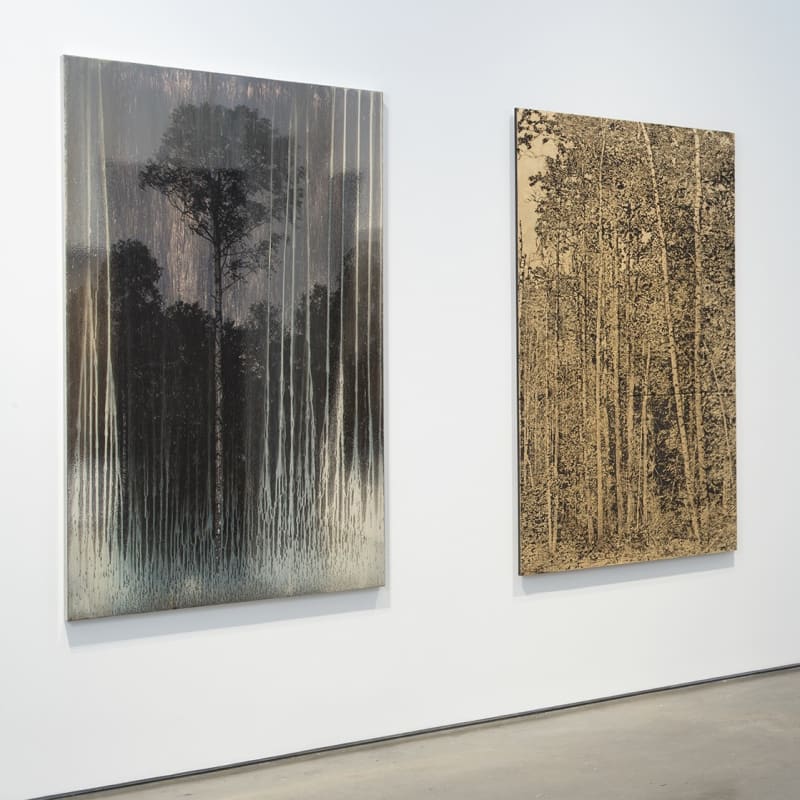One might say that Matthew Brandt's work is about the appropriation of nature by art, where it survives as an aesthetic trophy in a museum, gallery, or wealthy patron's home, not unlike the stuffed head of an exotic animal. Brandt's solo exhibition here offered up four different series of works, including "Birch," 2019-, and "Rooms," 2020-. The former is made up of portraits of birch trees the artist photographed around Saint Petersburg; the trees' likenesses have been burned onto actual birch panels and treated with gold leaf. (A related series here, "Silver," also 2017-21, features gelatin silver prints of birch trees adorned with liberal amounts of liquid silver, in reference to the pictures' constitutive material.) The latter series comprises chandeliers that the artist purchased from different people and that he laboriously transformed into memento mori dedicated to the chambers they once occupied. For each light fixture, Brandt took a 360-degree photograph of the space the object once hung in, then carefully heat-fused every piece of that picture to the chandelier's separate glass fragments-the lamps appear as though permanently reflecting every single dimension of the parlors in which they used to live.
The birch trees, sacred to Russian culture, look like pathetic ruins in Brandt's works-profaned almost beyond recognition-while the chandeliers call to mind bodies on view at a wake, heavily made up and ostentatiously displayed. The artist is obsessed with mortality, concerned with not only the demise of nature but with the death of photography itself, a medium that, like us, has been slowly dying since its inception. Yet through all manner of aesthetic and technical daring, Brandt's presentation deftly restores photography to creative viability.
Brandt treats his medium as something that does more than facilitate the mechanical reproduction of physical facts, making clear that even the most cognitively insightful pictures are created on a foundation of raw material. His images-which he produces using a wild assortment of substances, including the breast milk of nursing mothers and residue from the La Brea Tar Pits in Los Angeles-seem to me more like sublimated sculptural objects than like flat representations. Their textural richness gives them a peculiar affinity with Lucas Samaras's manipulated Polaroids, whose intense painterly textures yield an explosive, confrontational presence, in sharp contrast to Brandt's insular, introspective, and contemplative works. One artist gives us an encounter with raw human nature, while the other dolefully reminds us how quickly such vital forces can disappear.
The inseparability of material medium and image is conspicuously evident in Brandt's "Carbon" series, 2018-, a group of prints that incorporate the charred wood dust of forests destroyed by wildfires in California, where the artist lives. (One could also construe these works as an homage to French chemist Alphonse Louis Poitevin, who invented the photographic carbon-printing process during the mid-1800s.) Many of the trees in Brandt's pictures are white ghosts, forlorn shadows. There is not a single one that is green, i.e., the color of life, as Goethe characterized it. The artist shows us how far the great American wilderness has fallen from the heights it had reached in the nineteenth-century landscape paintings of Thomas Cole and Frederic Edwin Church. Brandt's pictures are like dark mirrors that portend an even darker future.

